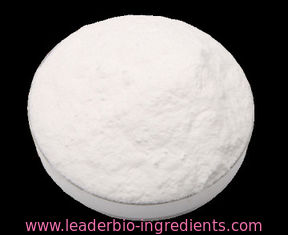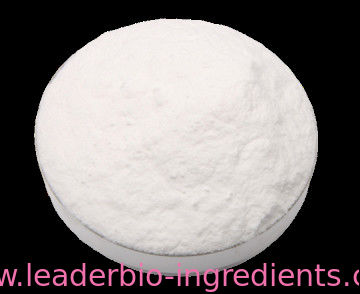| N-Acetyl-D-Glucosamine Basic information |
| |
| N-Acetyl-D-Glucosamine Chemical Properties |
| Melting point |
211 °C (dec.)(lit.) |
| alpha |
42 º (c=2,water,2 hrs) |
| refractive index |
40.5 ° (C=1, H2O) |
| storage temp. |
2-8°C |
| solubility |
H2O: 50 mg/mL colorless to faint yellow solution, clear to very slightly hazy |
| pKa |
13.04±0.20(Predicted) |
| Boiling point |
636.4±55.0 °C(Predicted) |
| density |
1.54 g/cm3 |
| form |
saline suspension |
| color |
white to off-white |
| Water Solubility |
Soluble in concentrated hydrochloric acid, sulfuric acid, phosphoric acid and formic acid. Insoluble in water, dilute acids, dilute alkalis, concentrated alkalis and organic solvents. |
| Sensitive |
Hygroscopic |
| Merck |
14,4458 |
| BRN |
1727589 |
| Stability: |
Stable. Incompatible with strong oxidizing agents. |
| InChIKey |
OVRNDRQMDRJTHS-ROGOILFBSA-N |
| CAS DataBase Reference |
7512-17-6(CAS DataBase Reference) |
| EPA Substance Registry System |
N-Acetylglucosamine (7512-17-6) |
| Hazard Codes |
Xi |
| Risk Statements |
36/37/38 |
| Safety Statements |
24/25-36-26-22 |
| WGK Germany |
3 |
| RTECS |
LZ6651000 |
| F |
3-10 |
| Hazard Note |
Irritant |
| TSCA |
Yes |
| HS Code |
29329985 |
| |
| N-Acetyl-D-Glucosamine Usage And Synthesis |
| Description |
N-Acetyl-D-Glucosamine is the N-acetyl derivative of glucosamine.Chemically it is an amide between glucosamine and acetic acid. A single N-acetlyglucosamine moiety linked to serine or threonine residues on nuclear and cytoplasmic proteins -O-GlcNAc, is an ubiquitous post-translational protein modification. O-GlcNAc modified proteins are involved in sensing the nutrient status of the surrounding cellular environment and adjusting the activity of cellular proteins accordingly. O-GlcNAc regulates cellular responses to hormones such as insulin, initiates a protective response to stress, modulates a cell's capacity to grow and divide, and regulates gene transcription. In humans, it exists in skin, cartilage and blood vessel as a component of hyaluronic acid, and bone tissue, cornea and aorta as a component of keratan sulfate.
N-Acetyl-D-glucosamine (D-GlcNAc) is a derivitized glucose monomer found in polymers of bacterial cell walls, chitin, hyaluronic acids and various glycans. It is also synthesized in the glycosylation pathway as uridine diphosphate (UDP-GlcNAc), which can then be released following degradation of glycosylated proteins.D-GlcNAc is used to identify, differentiate and characterize N-acetyl-β-D-hexoaminidase(s). It is also used in the treatment of osteoarthritis and inflammatory bowel disease (IBD), including ulcerative colitis and Crohn's disease. Further, it is used as a substrate in sialic acid production, cosmetics and in drug development research. |
| Chemical Properties |
White powder |
| Uses |
A pharmaceutical and cosmetic compound. |
| Uses |
N-acetyl-D-Glucosamine (GlcNAc) is a monosaccharide derivative of glucose. It is released by the action of O-GlcNAcase, in mammalian systems from proteins that have been post-translationally modified with O-GlcNAc. Levels of O-GlcNAcylation proteins from Alzheimer’s disease brain extracts are decreased as compared to that in controls, suggesting that release of GlcNAc may contribute to pathogenesis.1 In E. coli, GlcNAc induces the expression of multidrug exporter genes, indicating that this sugar can alter gene expression.1 GlcNAc is also the monomeric unit of chitin, which is found in fungi and many invertebrates, including crustaceans, insects, and nematodes. For this reason, chemicals that inhibit the incorporation of GlcNAc into chitin are cytotoxic to these organisms.
- Atypical microbial danger signal that acts as a new activator of NLRP3 inflammasome by dissociating the enzyme hexokinase from the mitochondria. D-GlcNAc inhibits purified hexokinase, which is also involved in the glucose metabolism and obesity in mM range. For hexokinase dissociation from the mitochondria much higher concentrations are needed.
- Acceptor substrate for galactosyltransferases. Inhibits the lectin WGA and is used to identify, differentiate and characterize N-acetyl-β-D-hexosaminidase(s).
- Used in the treatment of osteoarthritis and inflammatory bowel disease (IBD), including ulcerative colitis and Crohn's disease. Significantly enhances the prevention of joint damage and inhibits elastase activity and superoxide release from human polymorphonuclear leukocytes. Acts as a cytoprotective agent restoring the integrity and normal function of mucous membrane in humans.
- D-GlcNAc enhances the proliferation and collagen expression of fibroblasts, reduces hyperpigmentation and is therefore considered a valuable ingredient in cosmetics for improving skin wrinkles and color.
- Important substrate for the production of sialic acids.
- Used in multiple other applications in drug development and food supplement, based on a newly described bio-wave model.
|
| Definition |
ChEBI: The pyranose form of N-acetyl-D-glucosamine. |
| |
| N-Acetyl-D-Glucosamine Preparation Products And Raw materials |
|

